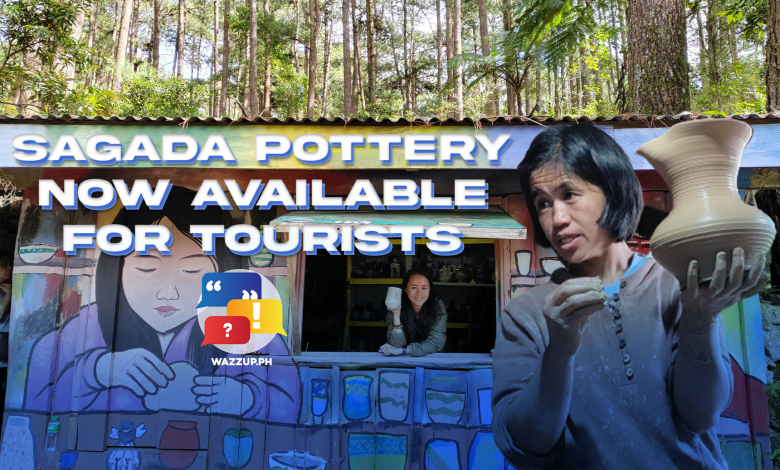
For those individuals who have a great fondness for Pottery Making, Sagada Ancient Pottery is a must to consider. Located in Cordillera Administrative Region in North Luzon Sagada Mountain Province, Sagada Pottery lies an ancient and venerated tradition of pottery making.
From the glimpse of the execution of the pottery making administered by Artisans, they did proffer great determination and endearment to their earthenwares – reflecting as well their heartwarming welcoming to their tourists. Per word explained suffice the details which cautiously reminded that every part must be followed, whilst, also took note of the gentleness for the tourist learners to deal effectively with the pace.
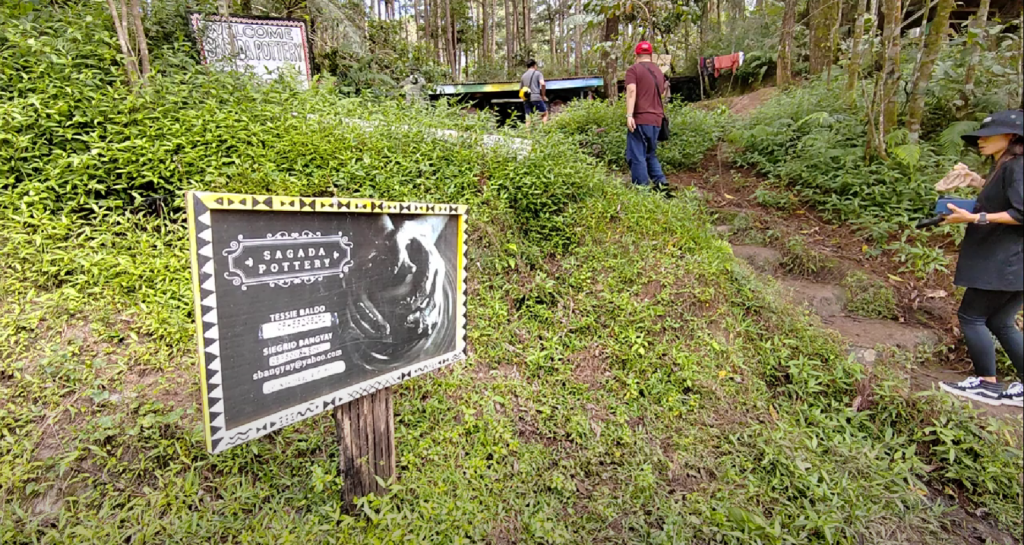
Sagada Pottery History
Evident up to this date, the heirloom jar tradition of Cordillera practiced for years. However, this specific tradition, reminiscing the 16th century, did not solely originate from these mountain folks but rather was imported from the near proximate countries, mainly China, and then indigenized.
Sagada Pottery had initially been restricted to Chinese Jars maneuvered in foods or tupay (rice wine), but later broke the norms after being passed from generation to generation with exquisite creativity.
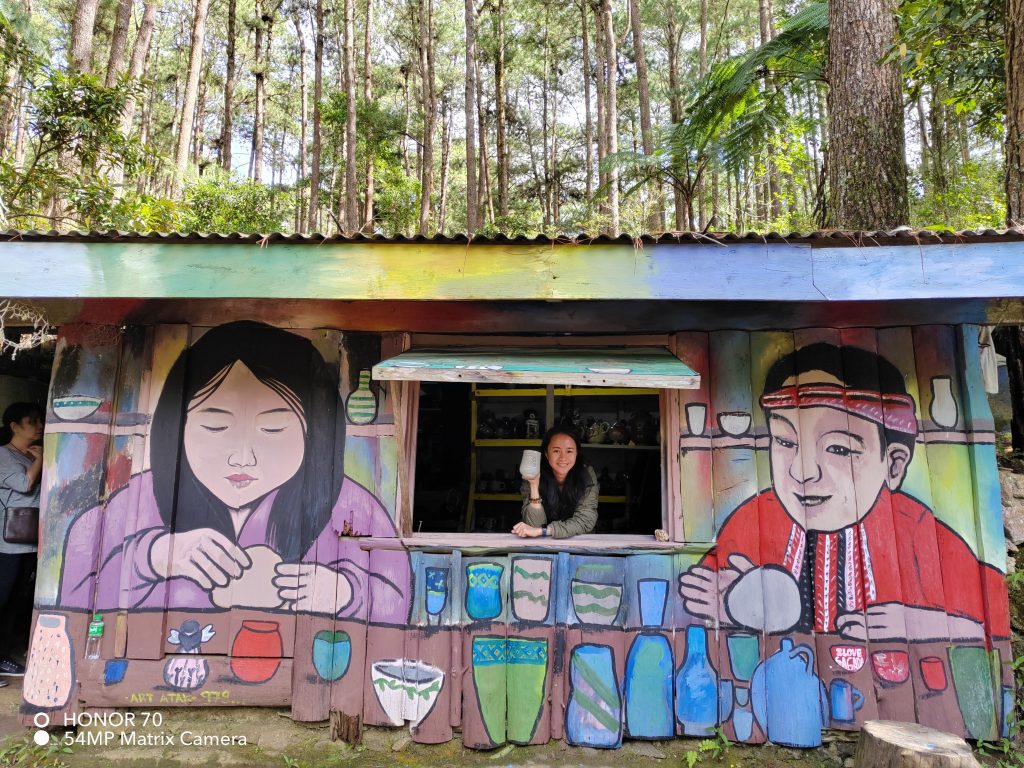
In contrast to the enormous history of this Cordillera Jar tradition, pottery-making is executed inside a small cottage – making the whole ambiance mellow and near nature.
The Sagada Pottery Workshop was established in 2000, founded by Archie Stapleton, a son of a missionary from the Philippine Episcopal Church, who enroots in the Sagada in the 1960s. “He saw the potential of the local clay and the local soil for pottery production that’s why he set this up as an alternative livelihood for the community,” Siegrid Bangyay reiterated. There are three kinds of pottery; earthenware (low-fired), stoneware (high-fired), and porcelain (high-fired), yet, the Cordillera Artisan specialized stoneware. She also indicated that they fired at the exact amount of 2,350 degrees to ensure its density.
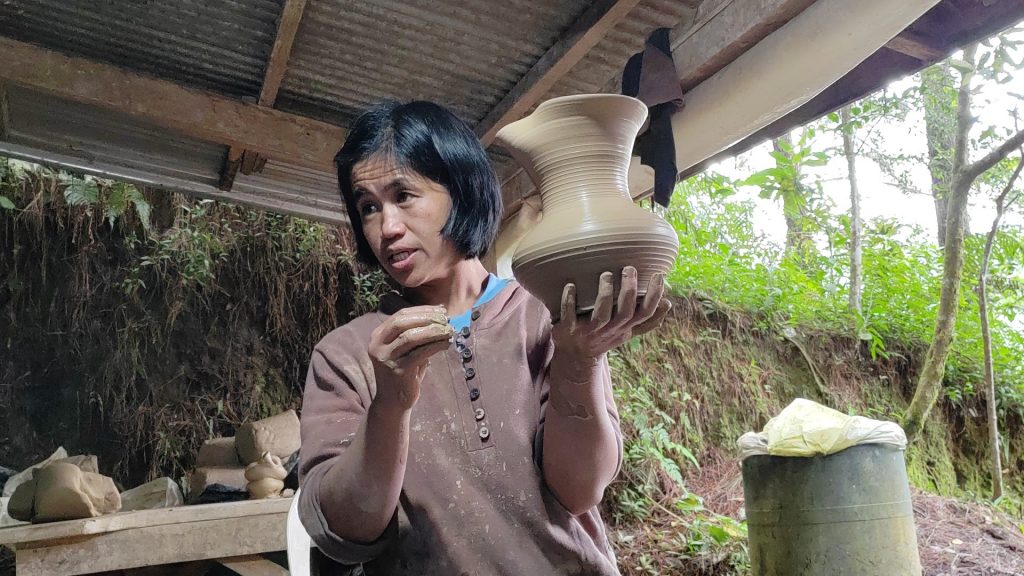
Sagada Pottery Making Process
Preferably the clay used in the process was all sourced inside the proximity of Sagada and attested if the clay’s temperature is within the prerequisite. If passed, the clay gathered would undergo water soaking. The Artisan mostly drips dry the assembled soil for about 3-4 months after mixing the 20% minerals and 80% natural clay, and at least 3 weeks of aging when the texture transpired as watery as expected until the clay was sufficiently dense for the pottery-making.
All of the following recommendations are a must to be followed as not every clay is proficient enough to use in the making.

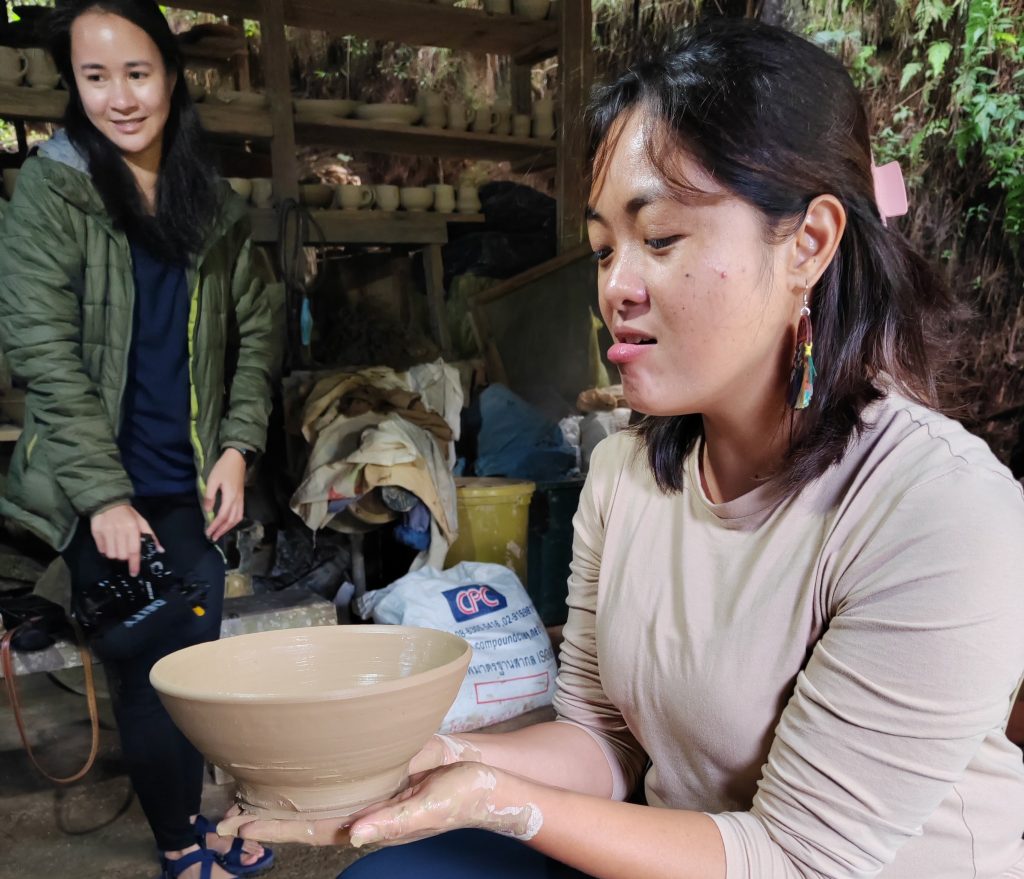
After the shaping process, it is then untouched for 5 days. This is where the “bisquiting process” starts, after air-drying for 1 month, it proceeds to settle the pottery in the kiln for 12 hours which produces an orange hue pot or namely the “unglazed pottery.” This primary firing affirms that the water molecule present dissipates from the pot entirely.
For the pot to establish a glassy texture and natural hue, Cordillera Artisan varnished them (glazing process), then proceed to the second firing (glaze firing). This permits the pot to be safe as food containers and also microwavable. The color of the pot depends on the glaze applied, therefore the more frequently the layers of glazed are applied, the more evident the color will be.
The workshop rate ranges from about 200 pesos only for a group watching the demonstration. And if you are willing to try the Sagada pottery-making process, 100 pesos it is individually.
For more information, you may contact directly Sagada Pottery Facebook page.
https://www.facebook.com/SagadaPottery/







